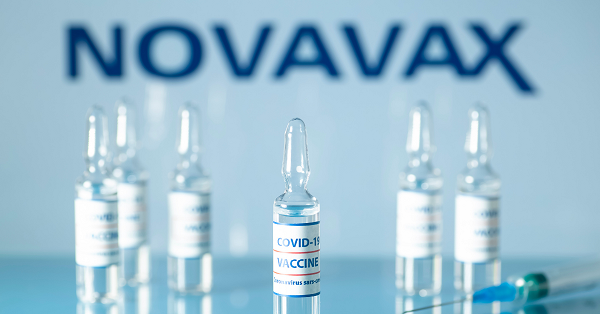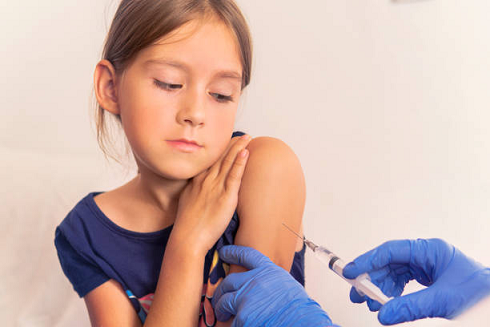Every fall I meet with teachers and school officials to review my children’s 504 plans to protect them from anaphylactic shock. This back-to-school ritual has become so routine that we hardly give it a second thought.
Section 504 of the Rehabilitation Act of 1973 protects people with disabilities and other qualifying health conditions from discrimination and unequal treatment in federally funded educational programs.1 Parents of students with disabilities can set up a customized plan (504 plan) with their school so their children can learn in a regular classroom without necessarily needing an individualized educational plan (IEP) or special services.2
A student qualifies for a 504 plan if his/her mental or physical disability affects or limits one or more major life activities.3 A condition is considered a qualifying disability under Section 504 if it impairs a major life activity such as walking, breathing, concentrating, reading, learning and interacting with others.These disabilities include learning disabilities such as dyslexia, ADHD, diabetes, epilepsy, cancer, pans/pandas, asthma, allergies, anxiety, depression, and other behavioral disorders.4
Both my children qualify for 504 plans because they have anaphylactic food allergies and the accidental ingestion of a peanut or tree nut could impair their breathing and literally kill them, which qualifies as a disability impairing a major life activity. Their 504 plans outline the accommodations the school will make in the classroom so that they are more likely to stay safe at school.
I do appreciate these accommodations and the kind-hearted teachers that go out of their way to look out for my children. The nut-free classrooms, letters going home alerting other parents not to pack peanuts, and school officials on the ready with life- saving epi-pens help decrease the constant worry that one stray peanut crossing my son’s path could end his life. The school’s accommodations provide a sense of control in a situation that often leaves me feeling helpless.
My children are not alone. According to The Wall Street Journal, between 2009 to 2015, the number of students receiving accommodations under 504 plans has more doubled from one percent to 2.3 percent of students.5 In 2017, one in 42 students had 504 plans in place at their public schools.6
The Epidemic of Chronic Disease in U.S. Children
The number of children with disabilities and chronic health conditions has risen sharply in the last four decades. The U.S. Centers for Disease Control and Prevention (CDC) reports that one in six children are affected by disabilities that impair their physical condition, learning ability, language or behavior.7 According to the Journal of the American Medical Association, the number of children with chronic health conditions has increased from 12.8 percent in 1994 to 26.6 percent in 2006.8 This means that more than one in four students in each classroom across the country has some kind of disability. Studies confirm that one in four children (15 to 18 million) under 17 years old suffer from a chronic health problem.9
Currently, 11 percent of children (boys and girls) are diagnosed with ADHD.10 In 2017, 14 percent of all boys were diagnosed with ADHD, compared to nine percent in 1997.11
According to the CDC, in 2017, 8.4 percent of all children (one in nine) suffered from asthma. This is more than double than the one in 27 children diagnosed in 1980.12 Boys, again, are harder hit with a rate of 9.2 percent recorded in 2016.13 The total number of children suffering from asthma increased by 75 percent between 1980 and 1994.14
One in five children has a language-based learning disability with dyslexia being the most prevalent. Between 25-40 percent of children with dyslexia also have ADHD.15
In 2018, it was estimated that eight percent or one in 13 children had a food allergy. According to the CDC, food allergies increased 50 percent between 1997 and 2011.16
Coinciding with the increase in chronic health conditions and disabilities in children since the early 1980s are increases in the number of vaccines given to children and babies. The recommended number of vaccines for children has tripled in the last 35 years.17
In 1983, the CDC recommended that children receive 23 doses of seven vaccines with no more than four administered at any one time.18 The CDC currently recommends that children receive 69 doses of 16 vaccines starting on the day of birth, with 50 doses of 14 vaccines given by age of six, and with eight or more vaccines being given together on the same day.19
We simply do not know whether the significant increase in recommended vaccines has contributed to the tremendous rise of chronic conditions in children. There has never been a study conducted to determine if multiple vaccines are safe when given at one time.20
In 2013, the Institute of Medicine published a report that revealed the federally recommended birth to six-year old child vaccine schedule had not been fully scientifically evaluated.21 There was not enough scientific evidence for physician committees to determine whether or not the CDC’s recommended childhood vaccine schedule is or is not associated with the development of the different types of brain and immune system disorders so prevalent among children today. These include, but are not limited to: asthma, allergy, autism, learning disorders, developmental disorders, epilepsy and ADD.22
Are We Substituting One Problem for Another?
With so many more school children requiring accommodations in order to learn in a regular classroom, it begs the question of whether we have substituted the risk of contracting what is often a short-lived infection with life-long chronic conditions. How was I persuaded to exchange a week of chickenpox for my children and I not being able to live without fear for even a moment of their lives without an epi-pen within reach?
In 2001 at a public workshop of the Institute of Medicine Immunization Safety Review Committee, NVIC co-founder and president Barbara Loe Fisher warned:
“Individual and public health is not measured solely by an absence of infectious disease. Today, instead of epidemics of measles and polio, our children are experiencing epidemics of chronic disease and disability. In the past 20 years, rates of asthma and attention deficit disorder have more than doubled; diabetes and learning disabilities have tripled; and autism has increased by 300 percent or more in most states.”23
While I am grateful to be part of a large group of parents comforted by the fact that my children are able to learn in a regular classroom despite their life-threatening allergies, I am left to wonder, now that students with 504 plans are becoming the new normal, have we created a culture of apathy towards the mounting epidemic of chronic diseases afflicting our children? Has the accessibility of accommodations allowed us to look the other way, never asking why—or demanding that public health officials find out why—so many children are sick and disabled in the first place?
Sheri Marino, MA, CCC-SLP, in her five-part series on the special needs epidemic and its effect on schools writes:
With limited resources, public schools are dealing with an epidemic of children with various special needs including behavioral, learning, physical, and mental health disorders, as well as chronic health issues like severe food allergies, asthma, diabetes, autism, ADHD, seizures, and more. We read about it in our headlines, so why aren’t we asking, “What is happening to our children?”24
As an attorney, I have always reveled in a fight for justice for the right cause. But I have come to realize that I may have been fighting the wrong battle all along. The prize in the end wasn’t getting accommodations for my children, it was knowing enough to never need them in the first place.
References:
1 Disability Rights and Defense Fund. Section 504 of the Rehabilitation Act of 1973.
2 Understanding 504 Plans. Understood.
3 Section 504 of the Rehabilitation Act of 1973. Center for Parent Information & Resources Oct. 11, 2010.
4 Durheim M. A Parent’s Guide to Section 504 in Public Schools. June 13, 2018.
5 Belkin D, Hobbs T. More Students Are Getting Special Help in Grades K-12. The Wall Street Journal July 3, 2018.
6 Learning Disabilities by the numbers. Understood 2017.
7 Centers for Disease Control and Prevention. Developmental Disabilities. CDC.gov Sept. 26, 2019.
8 Chronic Illness and the State of Our Children’s Health. Focus for Health.
9 Compas BE, Jaser SS, Dunn MJ, Rodriguez EM. Coping with Chronic Illness in Childhood and Adolescence. Annual Review of Clinical Psychology Apr. 27, 2012.
10 ADHD Statistics. ADDitude Aug. 12, 2019.
11 Thompson, D. ADHD Rates Rising Sharply in US Kids. Medical Press Aug. 31, 2018.
12 Fisher BL. Is the Childhood Vaccine Schedule Safe? NVIC Newsletter Oct. 1, 2017.
13 Asthma Statistics. American Academy of Allergy Asthma & Immunology 2019.
14 Childhood Asthma: A Growing American Epidemic. PRB Aug. 1, 2001.
15 Dyslexia Statistics and Myth Busting, Inspirational, Fun Facts. The Reading Well.
16 CDC. Healthy Schools Food Allergies. CDC.gov. May 29, 2019.
17 Vaccinations: Know the Risks and Failures. NVIC.org.
18 50 Doses of 14 Vaccines Before Age 6?69 Doses of 16 Vaccines by Age 18? NVIC.org.
19 CDC. Recommended Child and Adolescent Immunization Schedule for Ages 18 or Younger, United States, 2019. CDC.gov. Feb. 5, 2019.
20 The Chalkboard Campaign. There has Never Been A Single Study of the Current Vaccine Schedule. Vaccine Impact News Oct. 27, 2019.
21 Press Release. National Vaccine Information Center Supports Three of Five Recommendations of New IOM Report on U.S. Childhood Immunization Schedule Safety and Calls for Transparency. National Vaccine Information Center Jan. 16, 2013.
22 The Childhood Immunization Schedule and Safety. Institute of Medicine 2013.
23 Fisher BL. Oral statement at Workshop of Immunization Safety Review Committee. Institute of Medicine Jan. 11, 2001.
24 Marino S. The Special Ed Epidemic: What is Happening to our Children? Focus for Health Oct. 23, 2017.













6 Responses
As a former high school teacher, I found that having so many kids in special ed or with 504 plans was very stressful. It’s hard to keep up with everyone’s needs while still providing standards-based lessons. All teachers should have aides to help them deal effectively with this new normal.
Great information, I deeply appreciate.
I’m a mom of 2 kids.. 14 boy and 11 years old girl. My 14 year old, the boy was diagnosed at age 3 with Autism/ Developmental delay . My bay was a very happy baby, not born with Autism.
I know he was injured by vaccines. Today, both of my kids were expelled from school because the religious exempt is no longer acceptable. I have to homeschool both of my kids at the same time . It is very overwhelming and sad for both my kids. They miss going to school and engaging with their peers. My 11 year old girl cries every day because she misses her friends. This world is so cruel and evil. I want to join the mass, in exposing or doing what it takes to speak up. I wish I knew then what I know now. I refuse to vaccinate my kids.. please help.. God bless
“…have we created a culture of apathy towards the mounting epidemic of chronic diseases afflicting our children?” I’m not sure we have a culture of apathy, but rather a culture of aggression towards any human being who deigns o speak out, or question the safety and effectiveness of vaccines.
We don’t know if the increase in the vaccine schedule is causing this epidemic of chronic disease? You’d have to be sticking your head in the sand not to know. We don’t need more studies. We need to stop injecting poison into our children.
All vaccines have neurotoxins; either mercury, formaldehyde or aluminum. Say no and stand up for your rights and your children’s rights. IF you want to understand the pseudo science behind EMF and vaccines read the book: Going Somewhere by Dr Andrew Marino. We have replaced true science with toxic group consensus supported by corporations, injustice and greed. While the telecommunication and drug industry make billions; they are happy to payout the injured population in exchange for heavy profits at the cost of all of our health.
I also encourage you to look into sodium ascorbate use by Dr Frederick Klenner and Gaps Diet by Dr Natasha Campbell McBride. Please, get everyone to show up and vote; we all deserve health care and we are already paying for it. There is no reason we can’t have a single payor system and a democracy at the same time. Our health care is sick care and our country is losing big time to corporate greed. Sincerely,
Joanne Mendez, ARNP
Here it’s important to note that one source of the problem seems to lie in the vaccine formulations, and the (off label) use of peanut oil in many of them. The book
The Peanut Allergy Epidemic, by Heather Fraser lays out the historical use of peanut oil in vaccines, the early acknowledgment that this (then called “Serum Sickness”) was a problem, and the move to hide this ingredient from public sight as vaccine makers fell in love with it as an excipient in their formulas. Fraser makes a strong argument for getting peanut oil out of vaccines, the unavoidable protein fraction of which the body sees as a foreign agent and labels as enemy–leading to the strong reaction when it is ingested.